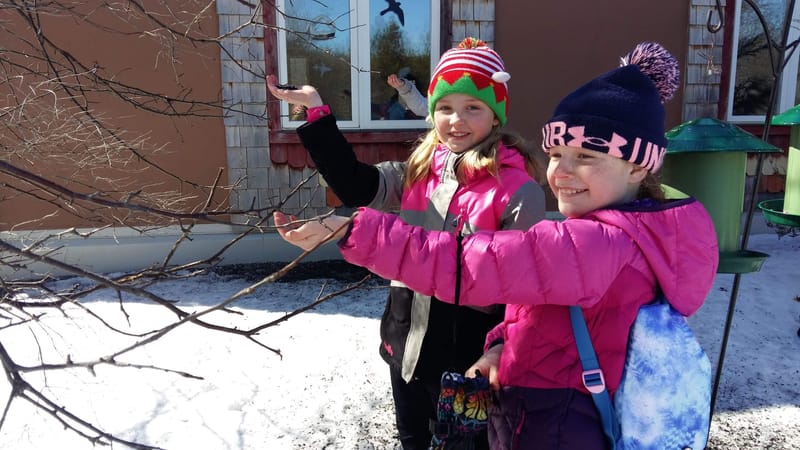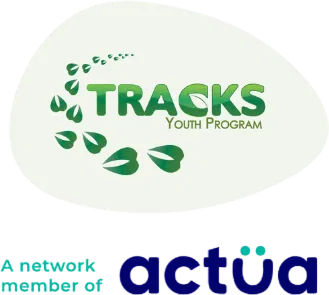Animal Connections

50 Bird Species and Their Sounds
This website teaches you 50 different bird sounds! Accompanied by beautiful drawings, this resource includes lots of local birds as well as some exotic ones! Open up the windows, find some quiet time and see how many you can identify from just around your house.
Feeding the birds
This is a simple way to spend some time outside interacting with our bird friends. If you have bird seed at home take a handful to the park and feed the birds! Make sure you’re not feeding them bread as birds can’t digest these complex carbohydrates. This is also a great opportunity to work on your identification skills, of both bird calls and physical descriptions!
Can you make a Robin’s Nest?
This activity is from the Big Book of Nature Activities by Drew Monkman and Jacob Rodenburg (2016) pg. 223
You’ll Learn: That making a nest is not easy!
You’ll Need: A bucket of warm soapy water, nice gooey mud (mix soil and water), lots of dried plant fibers (ex. dried grass), and of course patience!
Background: A bird egg is a beautiful thing. Within this fragile, round container is the promise of new, feathered life. Bird eggs come in a surprising variety of shapes, sizes and colours. However no matter what they look like, there is one indisputable fact: eggs roll! And a rolling egg is not a safe egg. Keeping their eggs both warm and safe from danger is the challenge every mother bird faces. That is why she makes a nest. Sometimes a bird nest is an elaborate affair like the woven, hanging nest of an oriole, and sometimes it is as simple as a hollow scrape in the ground like that of a killdeer. At first blush, making a bird’s nest doesn’t seem that remarkable. But if you think about it, birds have a handicap. They have no hands! In the case of robins, the nest is built by the female over the course of about six days. She often locates it on a ledge or a forked tree branch and constructs it mostly from dead grass, twigs and mud. A robin nest can contain 350 individual pieces of vegetation! The bird drops grass on top of a layer of mud and molds it into shape by sitting, squirming, pushing with the wrist of her wings and stamping with her feet. Then she turns several degrees and goes through the same process again. By the time she is finished, she may have made several complete rotations.
Procedure:
- Begin by making a mud and plant fiber pancake. Mix fibers together with globs of mud. Mix, knead, and mix again. You should have a pancake about 6 in. (18 cm) across and ½ in. (1 cm) thick.
- Make four long fiber and mud cigars, about 4 in. (10 cm) long and ¾ in. (2 cm) thick. Roll, mix, and roll again.
- Using mud, stick these mud cigars to the perimeter of the pancake. Knead them all together using plenty of mud.
- Sculpt the sides. Add more mud as required.
- Line with soft grasses and tufts of downy seeds. Let dry.
- Place your nest on something sturdy and admire your creation. You never know- maybe a robin will adopt it as its very own!
Add On: Anishinaabemowin colouring book all about Birds
http://www.fdlrez.com/ojibwe/downloads/Bineshiiyag.pdf
Takaya: Lone Wolf
This episode of The Nature of Things will take you on a journey, following Takaya, the lone wolf, through 7 years of his life. This movie recounts the inspirational story of one animal’s resilience, adaptation and survival as he takes on the odds. A 44 minute film and well worth the watch!
https://gem.cbc.ca/media/the-nature-of-things/season-59/episode-3/38e815a-011bbb402da
Ontario Turtle Conservation Centre
Our friends at Ontario Turtle Conservation Centre (OTCC) do some really incredible work helping native turtle species of this territory. Check out this short video for a snapshot of how they help these incredibly important animals!
Salamander Activity Book
What a perfect time of year for this activity book! Spring is an optimal time to see our amphibian friends out and about. It includes coloring pages, crosswords, fun facts about salamanders, and more! If you decide to spend some time looking under rocks and logs for salamanders this Spring, be sure to let them crawl into their homes on their own as opposed to putting a heavy object directly on top of them. Happy searching!
The Toronto Zoo
Even though the Toronto Zoo is closed during this time, they’re offering some really amazing learning opportunities for learning from home by discussing the incredible diversity within animal kingdoms.
They’re offering Facebook Live sessions everyday at 1pm https://www.facebook.com/TheTorontoZoo, more specific lesson-based live streams every Tuesday and Thursday at 11am http://www.torontozoo.com/zootoyou/school and a wide variety of lesson based resources http://www.torontozoo.com/zootoyou/resources. With these 3 resources you’ll learn about how animals move through water, adapt to seasonal changes, digest their food, and so much more!
